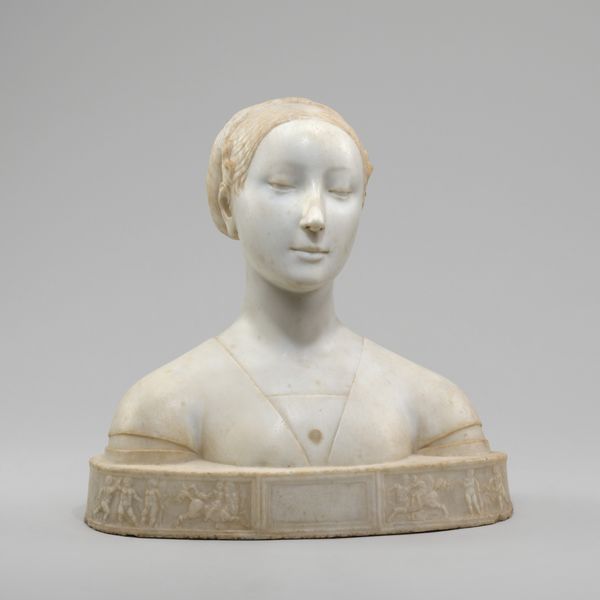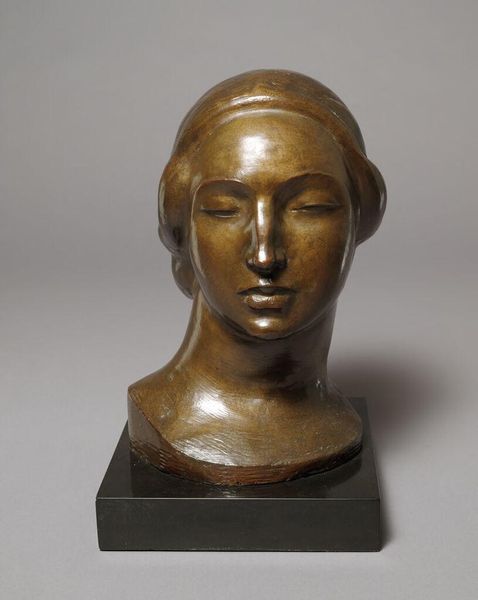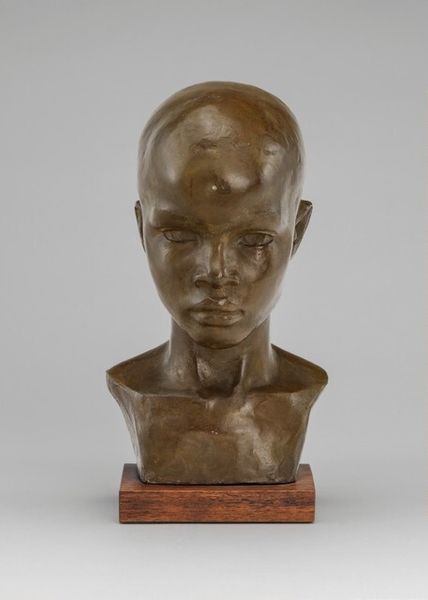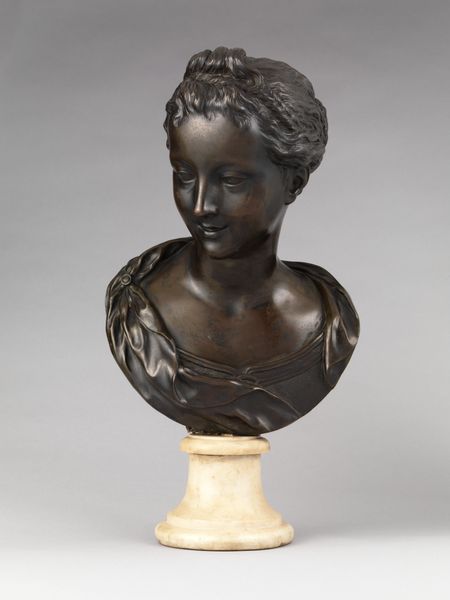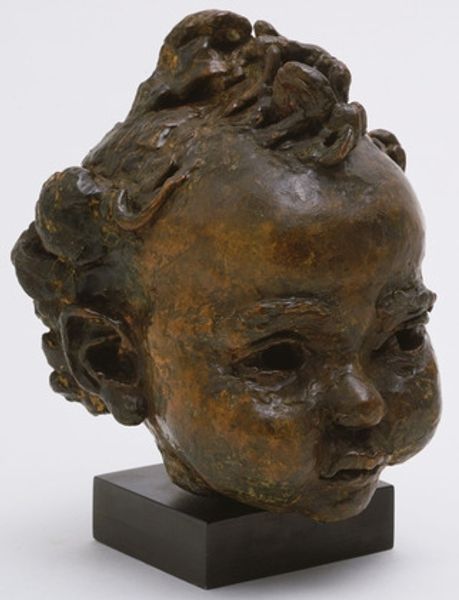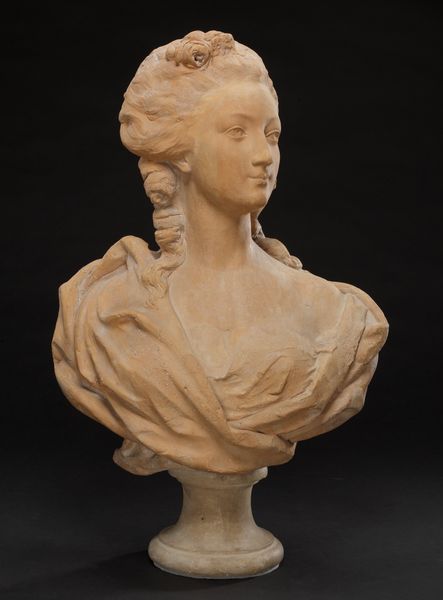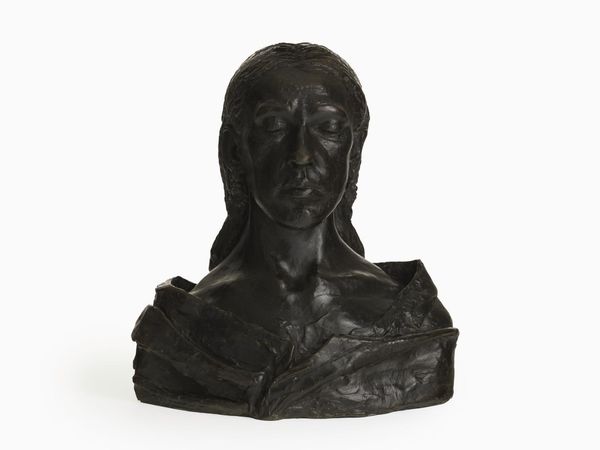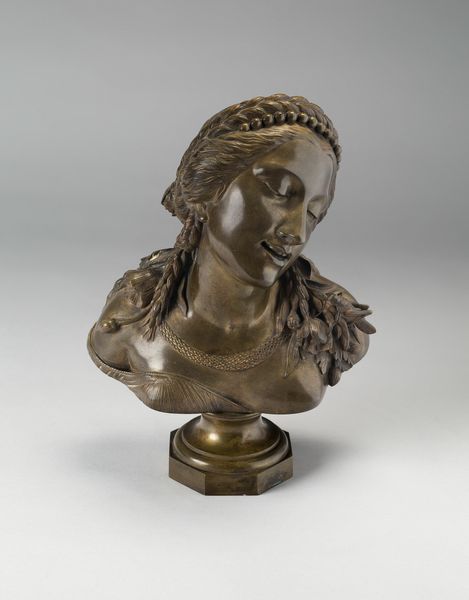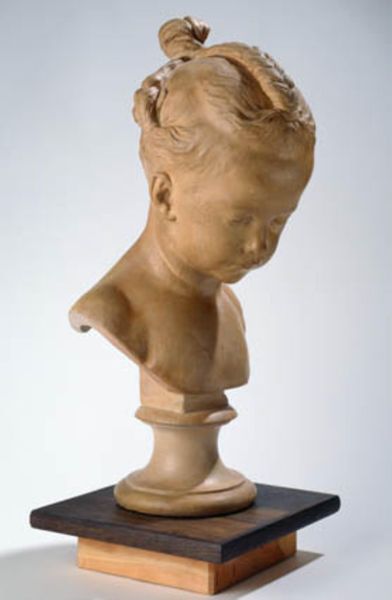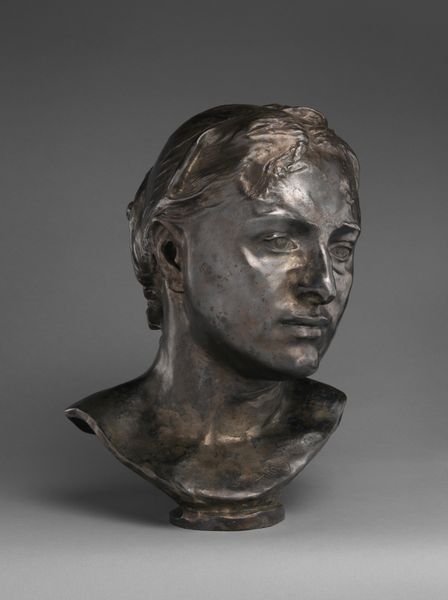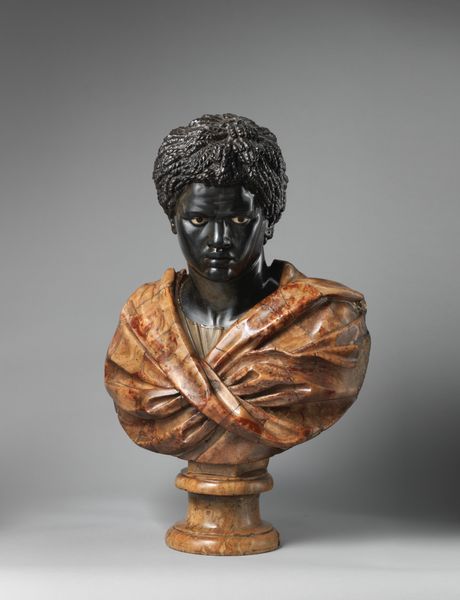
Dimensions: object: 425 x 419 x 248 mm
Copyright: CC-BY-NC-ND 4.0 DEED, Photo: Tate
Curator: Wilhelm Lehmbruck's "Inclined Head of a Woman" resides here at the Tate. Editor: She looks like she's lost in contemplation, or perhaps overcome with quiet grief. Curator: Lehmbruck, working in the early 20th century, aimed to capture human emotion through simplified forms. The sculpture stands at just over 42 cm in height. Editor: Her closed eyes certainly evoke a sense of internalized experience, but is it truly universal? Considering the history of the female gaze, whose emotions are truly being centered? Curator: Lehmbruck's work often engaged with prevalent themes of his time, exploring the emotional toll of war and societal anxieties. Editor: Right, and how did those anxieties shape representations of women specifically? Was this quiet resignation imposed or chosen? It invites a crucial conversation about agency. Curator: It gives us so much to consider about the role of art during periods of immense social upheaval. Editor: Precisely, and how those representations continue to resonate, or perhaps haunt us, today.
Comments
tate 6 months ago
⋮
http://www.tate.org.uk/art/artworks/lehmbruck-inclined-head-of-a-woman-t00543
Join the conversation
Join millions of artists and users on Artera today and experience the ultimate creative platform.
tate 6 months ago
⋮
The sculpture was based on an earlier full-length standing figure made by Lehmbruck in Paris in 1910. The large sculpture, which is generaly regarded as Lehmbruck's first mature work, represented a woman, naked except for a cloth wrapped around her legs. The model for the piece was the artist's wife Anita. It was Lehmbruck's practice to base new sculptures on parts of larger works. Here he has re-used the head and shoulders of original figure to create a smaller work of a more intimate scale. Gallery label, August 2004

